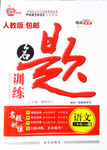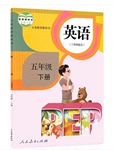题目内容
After the popularity of the Ice Bucket Challenge, another challenge now is hot in India. Indians give rice to their poor neighbors for a charity (慈善) which is called “Rice Bucket Challenge”. 1. It is about giving a bucket of rice to someone who is in need and taking a picture named “Rice Bucket Challenge” to share online. The aim of the activity is to help the poor and hungry people in India, and the movement’s Facebook page has so far clocked up more than 50,000 likes. 2. The activity was started by Manju Latha Kalanidhi, a 38-year-old journalist, who thought the Ice Bucket Challenge was a little strange. She said, “Hunger is a disease anybody would connect.” The challenge has gained a lot of support with students signing up in Indian Institute of Management, and more and more people join in it. 3.
India is the world’s second-biggest rice consumer, with a storage of 21.2 million tons of the grains. 4. It has suffered with mass hunger, and last year was ranked 63rd of 78 countries on the International Food Policy Research Institute’s global hunger index. How to participate in this activity? First, pick up a bucket of rice from your home and give it to the neighboring people who are in need. 5. At last, invite online all your friends and ask them to take up the challenge. It is important to post back on Facebook because it will inspire all your friends to come forward. All the people get together and make a difference!
A. Besides, hand the rice bucket over to other people who are in need.
B. It is not an activity involving dumping a bucket of rice on someone’s head.
C. The activity raises the public awareness and charitable donations to agriculture.
D. The AirAsia India airline says its staff including senior management will join.
E. Then, take a picture and post it on facebook with “Rice Bucket Challenge”.
F. But it is far from enough for this country.
G. The initial inspiration came from the ice bucket challenge.
1.B
2.G
3.D
4.F
5.E
【解析】
试题分析:本文写了米桶挑战,“米桶挑战”与“冰桶挑战”概念相似,但参加者不是要淋米,而是向有需要的人捐出一桶米,拍下照片,再向其他人发出挑战,以此来帮助需要的人。
1.B考查对上下文的理解能力。由Rice Bucket Challenge”. It is about giving a bucket of rice to someone who is in need and taking a picture named “Rice Bucket Challenge” to share online. 可知米桶挑战不是向某个人的头上淋米,而是赠给需要的人一桶米,后文是解释米桶挑战,所以前一句是误解,所以选B。
2.G考查对上下文的理解能力。由后文冰桶挑战的开始,可知此处是提到了冰桶挑战,所以选G。
3.D考查对上下文的理解能力。由The challenge has gained a lot of support with students signing up in Indian Institute of Management, and more and more people join in it可以知道越来越多的人加入米桶挑战,所以D选项中也是有人加入,所以选D。
4.F考查对上下文的理解能力。由下文可知还是有很多人在承受着饥饿,可知这个挑战不足以满足需要的人们,远远不够,所以选F。
5.
考点:考查时事新闻类短文阅读

 名题训练系列答案
名题训练系列答案 期末集结号系列答案
期末集结号系列答案